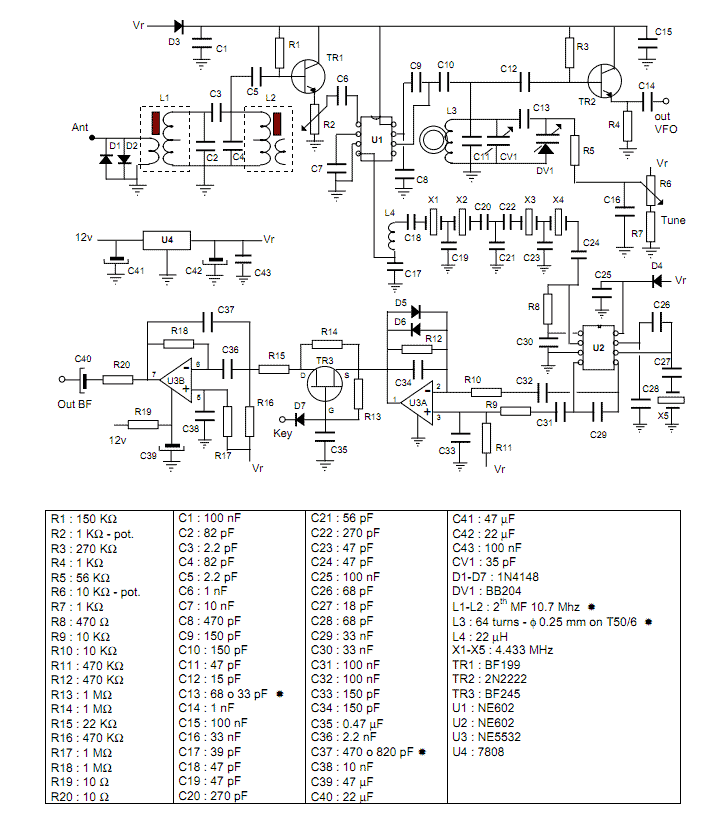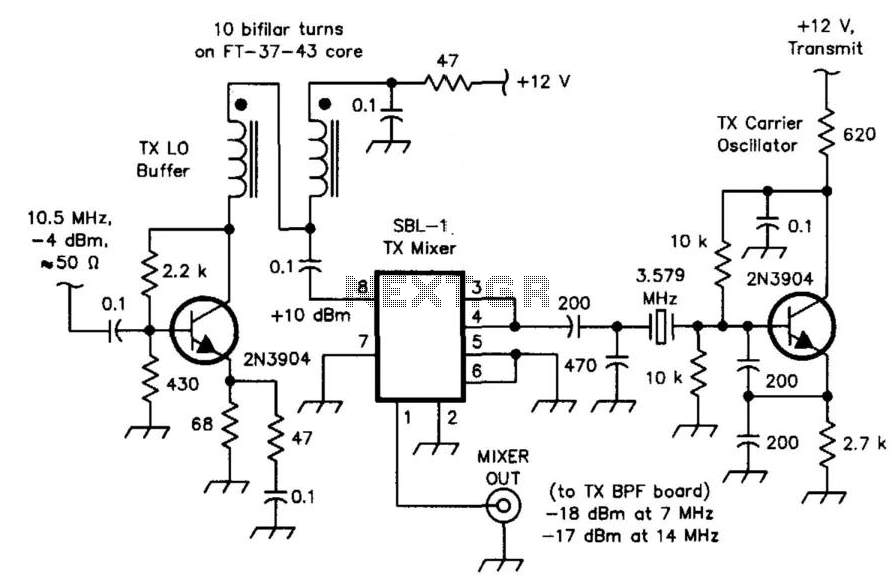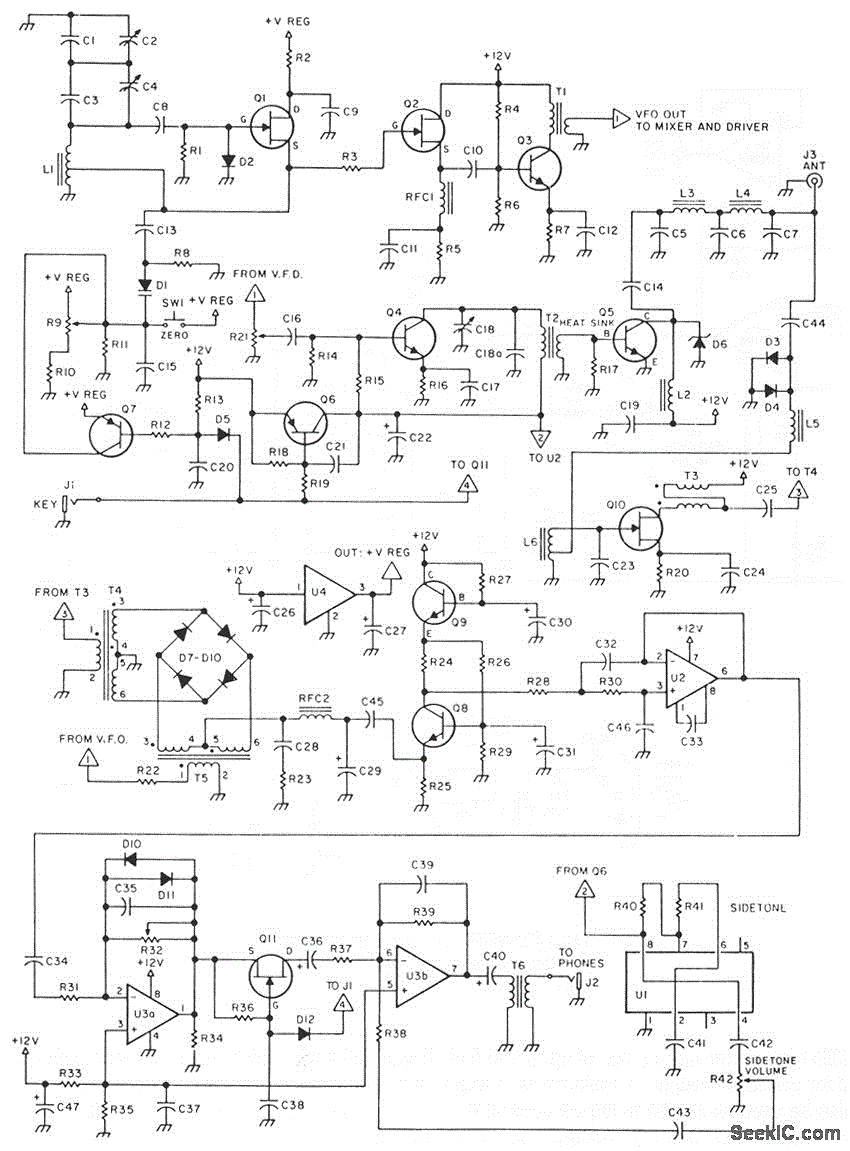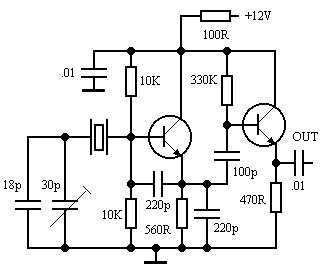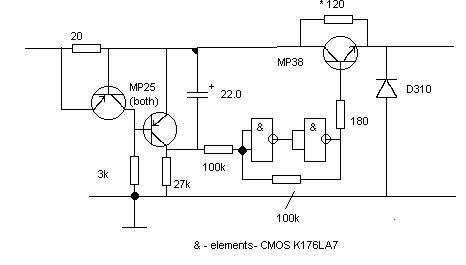
5W 80M Cw Transceiver
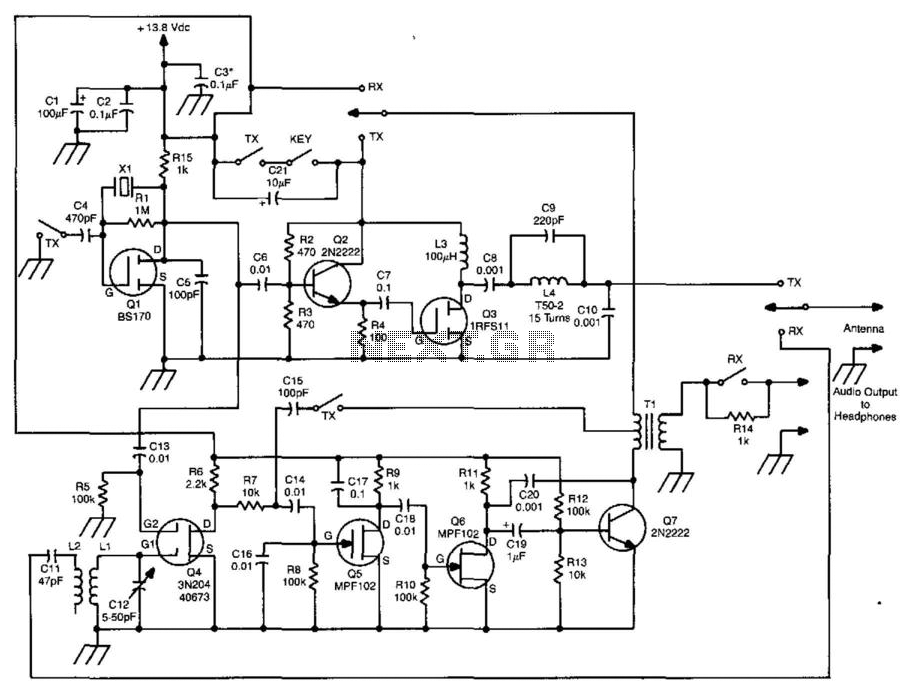
This transceiver features a three-stage transmitter and a direct-conversion receiver. The oscillator for the transmitter is controlled by Q1, with the frequency regulated by X1, which also functions as the local oscillator for the receiver. Buffer Q2 drives the final amplifier Q3, producing an output of approximately 5 watts. The B+ lead to these stages is keyed. The receiver includes a mixer (Q4) followed by high-gain amplifiers (Q5, Q6, Q7), with the audio signal extracted from the secondary of Q7. In transmit mode, Q5, Q6, and Q7 operate as a sidetone oscillator. A 6PDT switch is necessary for the transmit/receive (T/R) switching.
The transceiver circuit is designed to facilitate efficient communication by integrating a three-stage transmitter and a direct-conversion receiver. The transmitter's oscillator, Q1, plays a pivotal role in generating the RF signal, with its frequency being precisely controlled by crystal X1. This crystal not only stabilizes the transmitter's frequency but also acts as the local oscillator for the receiver, ensuring that both sections of the transceiver operate in harmony.
Buffer transistor Q2 is responsible for driving the final amplifier, Q3, which is capable of delivering an output power of around 5 watts. This output is sufficient for effective communication over a variety of distances. The B+ lead, which supplies power to these critical stages, is keyed to prevent unwanted transmission and to ensure that the circuit operates only when intended.
The receiver section is comprised of a mixer (Q4) that combines the incoming RF signal with the local oscillator signal from X1, effectively down-converting the frequency. The subsequent high-gain amplifiers, Q5, Q6, and Q7, amplify the audio signal extracted from the mixer. The output from Q7 provides the audio signal that can be further processed or sent to a speaker for audible output.
In the transmit mode, Q5, Q6, and Q7 are configured to function as a sidetone oscillator, allowing the operator to hear their own transmitted signal, which is crucial for ensuring clarity and proper modulation during transmission. The system incorporates a 6PDT switch to facilitate seamless switching between transmit and receive modes, enhancing the usability of the transceiver in various operational scenarios. This design emphasizes reliability and performance, making it suitable for a range of communication applications. This transceiver has a 3-stage transmitter and a direct-conversion receiver. Ql is the transmitter"s oscillator, an d the frequency is controlled by XI, which also serves as the receiver local oscillator. Buffer Q2 drives final amplifier Q3 to about 5 W output. The B+ lead to these stages is keyed. The receiver consists of mixer Q4 followed by high gain amplifiers Q5/Q6/Q7. The audio signal appears at the secondary of Q7. In the transmit mode, Q5/Q6/Q7 serve as a sidetone oscillator. A 6PDT switch is required for the T/R switching. 🔗 External reference
The transceiver circuit is designed to facilitate efficient communication by integrating a three-stage transmitter and a direct-conversion receiver. The transmitter's oscillator, Q1, plays a pivotal role in generating the RF signal, with its frequency being precisely controlled by crystal X1. This crystal not only stabilizes the transmitter's frequency but also acts as the local oscillator for the receiver, ensuring that both sections of the transceiver operate in harmony.
Buffer transistor Q2 is responsible for driving the final amplifier, Q3, which is capable of delivering an output power of around 5 watts. This output is sufficient for effective communication over a variety of distances. The B+ lead, which supplies power to these critical stages, is keyed to prevent unwanted transmission and to ensure that the circuit operates only when intended.
The receiver section is comprised of a mixer (Q4) that combines the incoming RF signal with the local oscillator signal from X1, effectively down-converting the frequency. The subsequent high-gain amplifiers, Q5, Q6, and Q7, amplify the audio signal extracted from the mixer. The output from Q7 provides the audio signal that can be further processed or sent to a speaker for audible output.
In the transmit mode, Q5, Q6, and Q7 are configured to function as a sidetone oscillator, allowing the operator to hear their own transmitted signal, which is crucial for ensuring clarity and proper modulation during transmission. The system incorporates a 6PDT switch to facilitate seamless switching between transmit and receive modes, enhancing the usability of the transceiver in various operational scenarios. This design emphasizes reliability and performance, making it suitable for a range of communication applications. This transceiver has a 3-stage transmitter and a direct-conversion receiver. Ql is the transmitter"s oscillator, an d the frequency is controlled by XI, which also serves as the receiver local oscillator. Buffer Q2 drives final amplifier Q3 to about 5 W output. The B+ lead to these stages is keyed. The receiver consists of mixer Q4 followed by high gain amplifiers Q5/Q6/Q7. The audio signal appears at the secondary of Q7. In the transmit mode, Q5/Q6/Q7 serve as a sidetone oscillator. A 6PDT switch is required for the T/R switching. 🔗 External reference
